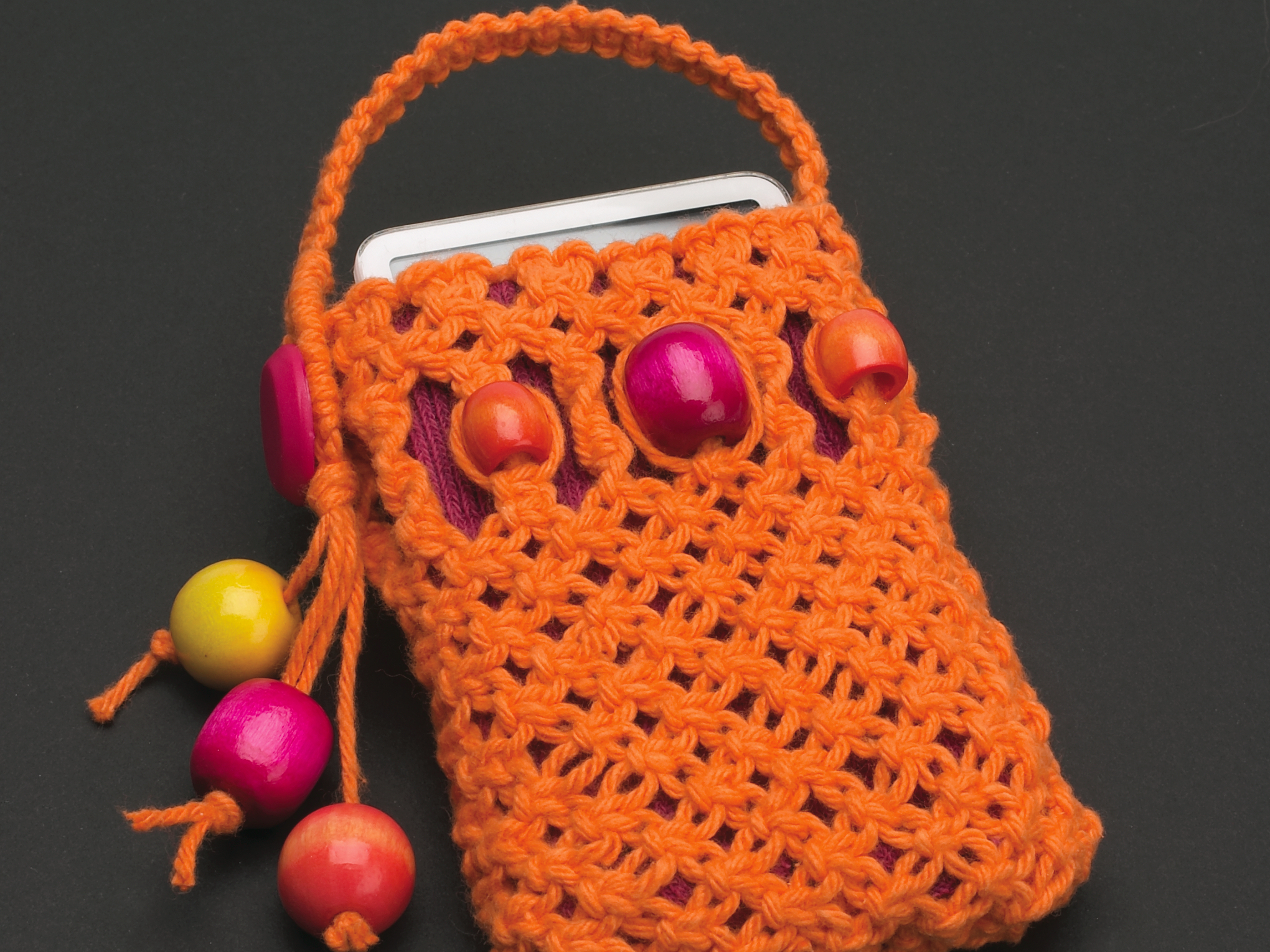Macramé has come a long way since the 1970s when plant hangers were all the rage. I recall how excited I was when a class was offered at our local park. I was only 10 at the time, and I remember getting my ceiling tile, T-pins, and a big ball of jute to begin my first project. Soon after, I was making a hot pink plant hanger with big white wooden beads for my room.
Years after leaving the craft behind, who would have dreamed I’d be using those same knots to create a pouch for a high-tech device? It’s fun to knot accessories and jewelry using the new fibers and cords available.


